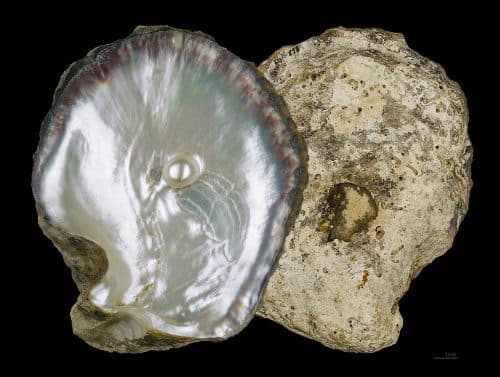Nature can be used as a source of inspiration for smart and innovative technology.

By: Yael Halfman Cohen
Nature is a source of knowledge and inspiration for smart, innovative, and environmental materials. Organisms produce their tissues under environmental conditions, using materials and local energy. These materials have a variety of functions, which sometimes surpass the function of artificial synthetic materials in their performance. The biological advantage is usually achieved by textures at the nano level and by using elements and a unique atomic arrangement.
One example is materials that prevent the development of cracks. The pearl shell has an extraordinary ability to repel cracks, even though it is mainly composed of chalk. Researchers from McGill University in Canada have identified a system of micro-cracks between brittle plates of calcium carbonate, filled with a sticky polymer, which - according to the researchers - prevent the development of larger cracks by shifting and distributing loads. The researchers imitated the array of cracks they uncovered in the pearl oyster. They created a three-dimensional array of microscopic cracks in the glass and filled them with polyurethane. This glass is 200 times stronger than normal glass. The toughened glass deforms under stress without breaking, so it is ideal for windows, electronic equipment and glassware. The team believes that a similar strategy can be applied to other brittle materials such as ceramics. In the next step, the researchers are interested in testing whether microcracks without filling will also stop the development of cracks (even though in the natural oyster model the microcracks are filled). If it turns out that the presence of microcracks alone without filling is sufficient to stop the cracks, it will be possible to prevent the incorporation of the identified polyurethane as a carcinogenic substance, and therefore there is a priority to remove it from the glass.
Another example is extremely smooth materials that repel liquids and biofilm development. The pitcher plant has a particularly smooth pitcher shape. It can be assumed that this feature helps it capture the insects it feeds on (it is a carnivorous plant). The plant was studied by engineers at the Wyss Institute at Harvard University. Microscopic folds that hold water are responsible for the smooth surface of the pitcher, producing a thin layer of water on the surface. The researchers adopted the idea, and created a surface with micro-nozzles, which hold lubricating fluid. The surface is so smooth that even crude oil and liquid asphalt roll on it. Unlike other hydrophobic surfaces, this surface can heal itself, as the lubricating fluid fills in scratches as they occur. The strategy of the nozzles that hold liquid can be applied to additional surfaces, and have the potential for additional applications such as anti-bacterial, anti-icing, removal of chemicals and liquids, prevention of corrosion, and removal of pests and ticks. The technology is currently commercialized by (Slippery Liquid-Infused Porous Surfaces) SLIPS Technologies.

3 תגובות
Assaf, I'll settle for stuffed grape leaves.
- Every locksmith knows that to stop the spread of a crack, a hole is drilled at the end...
- The pitcher plant is used as a (delicious) food when it is stuffed with rice and meat...
Yael Helfman, I think that when terms are used in the article that almost no reader is familiar with, such as "biofilm", it is appropriate to explain in a few words what it is about and not expect the reader to go in the middle of reading to search Google or Wikipedia for what you meant.